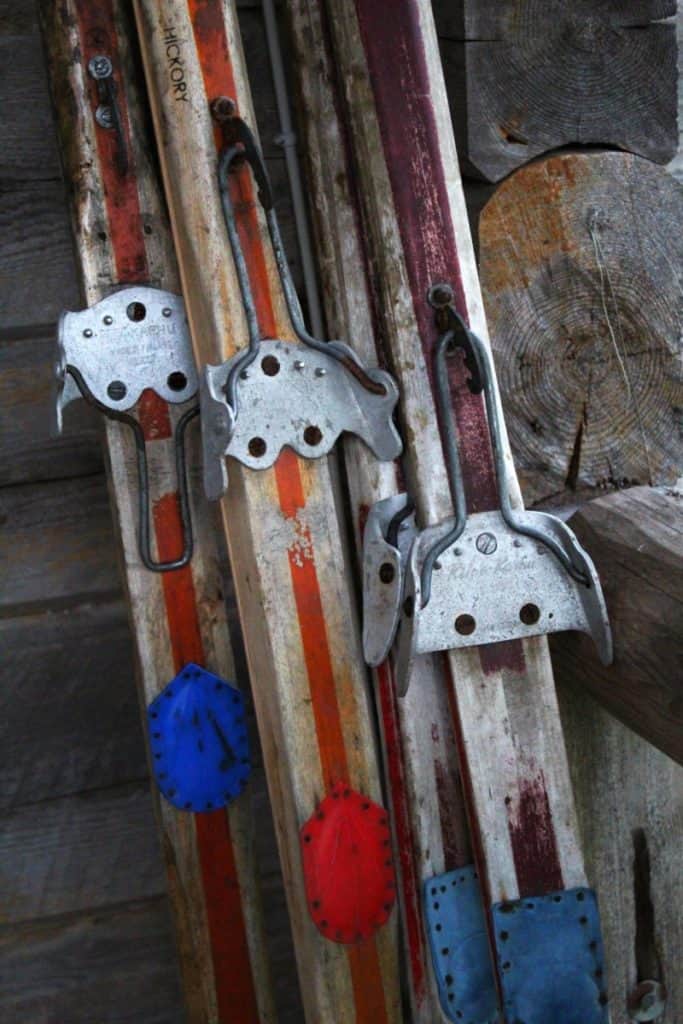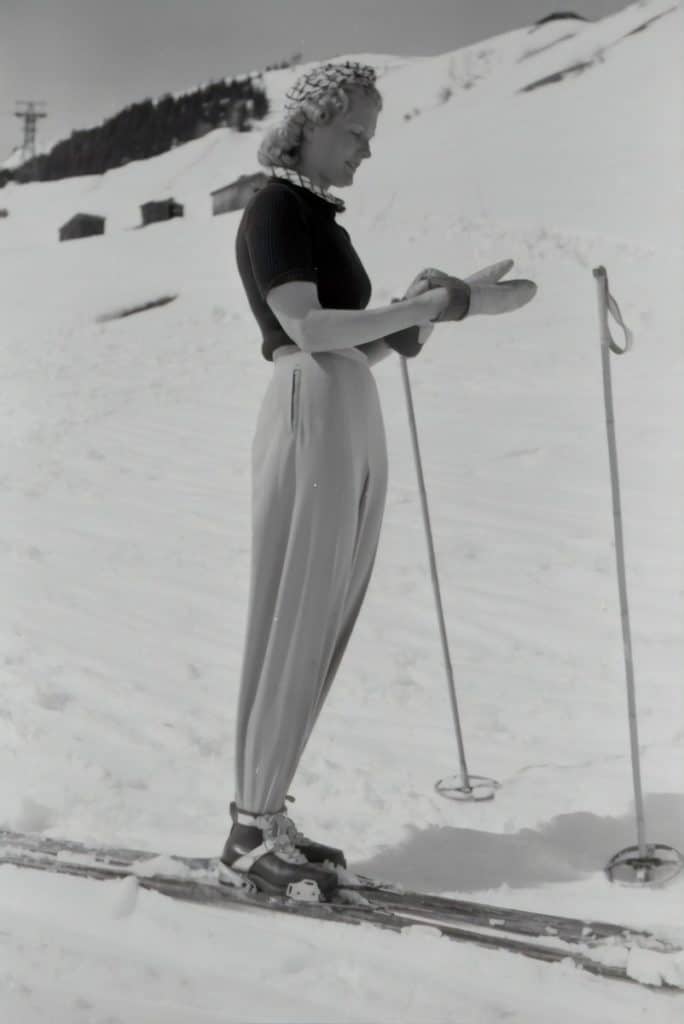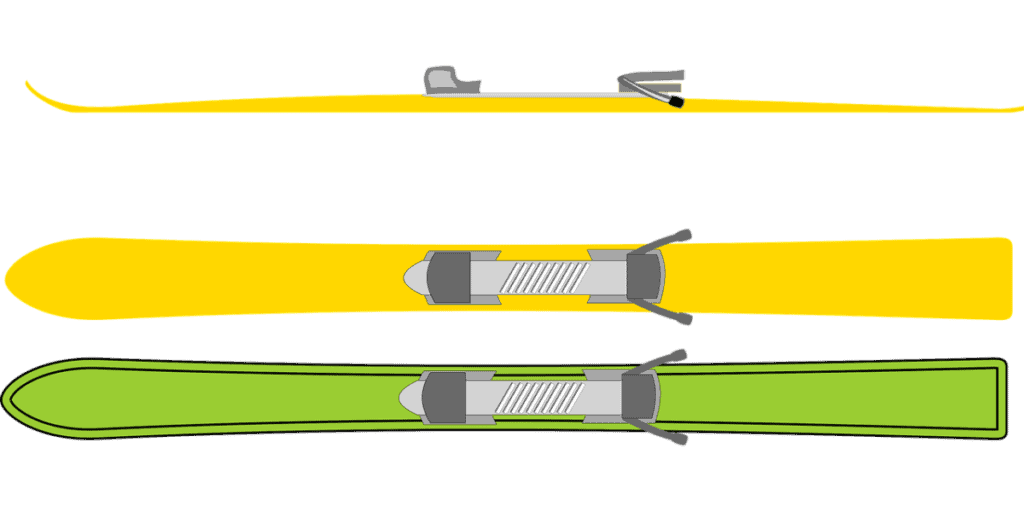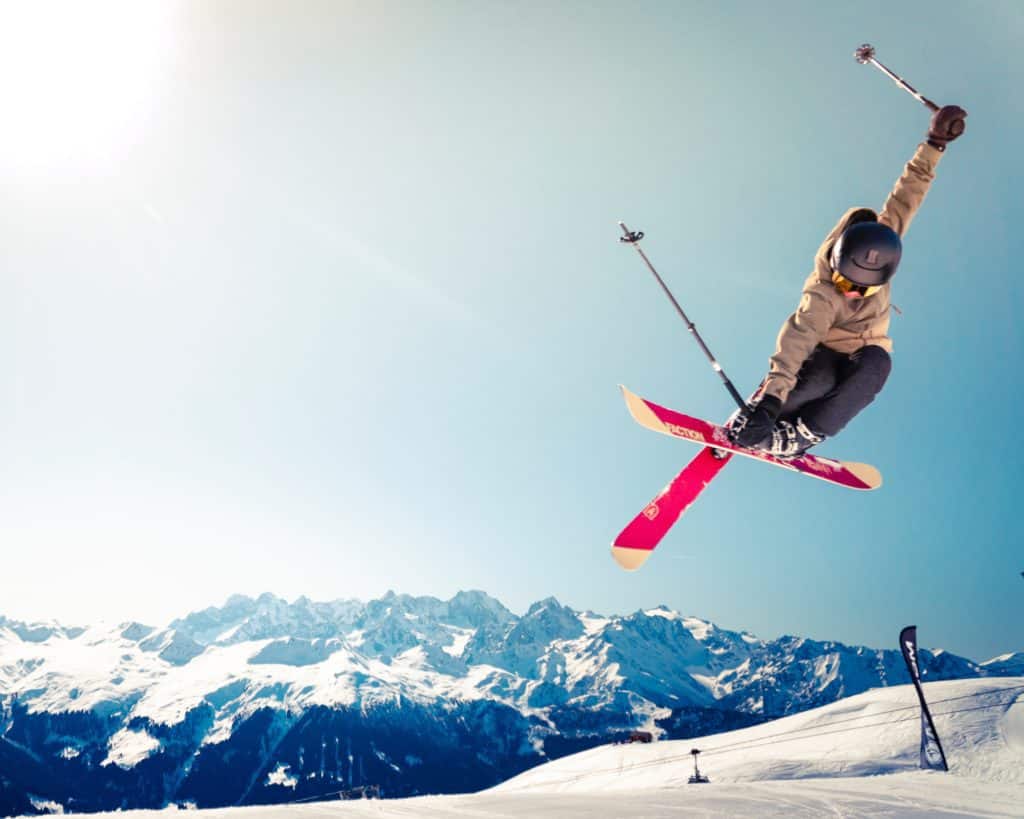Ski Bindings are the most important part of a skiers equipment when it comes to safety.
Ski bindings form a secure connection between a skiers boot and the ski. But crucially, one which will release the ski at a pre-determined force in the case of an accident.
They have in-built brakes which deploy in the event of the skis becoming detached, to avoid the ski running off down the hill on its own. In terms of safety, it is critical that they are functional and reliable.
When choosing the right ski binding for you it is important to consider things such as DIN rating, ski and boot compatibility and skiing ability and style.
In this guide, I explain ski binding design and outline all the factors you need to consider before choosing a pair of ski bindings.

Disclaimer: Some links in this article are affiliate links, which means that if you purchase through them I receive a small commission, at no extra cost to you. This helps cover the cost of running this blog. Thanks for your support!
Types of Ski Bindings
Bindings come in many different forms. There are four main types of ski bindings. These are:
- Alpine Bindings
- Touring bindings
- Telemark bindings
- Nordic bindings
In this guide we will concentrate on Alpine bindings.
Alpine Bindings
These are used solely for downhill skiing and there are a great many to choose from.
The most important features of an Alpine binding are the following:
- To create a solid, secure and safe attachment of boot to ski.
- Have a reliable and accurate release mechanism to protect the skier from injury during a fall.
- Having a suitable system to prevent the ski from running away in the event of it coming detached.
- To be able to allow for flex in the ski so as to prevent unwanted release.
- Act as shock absorbers for the skier in certain conditions. For example, landing jumps or skiing bumps.
Ski Binding Design
The design of bindings is constantly evolving. While the look of them may seem the same the technology combined with the materials used has resulted in them becoming lighter, stronger and safer over the years.
They typically comprise of 2 main elements. A toe Mechanism built around a toe cup and the rear mechanism built around the heel cup. The rear mechanism clamps the boot into place automatically when the heel is pushed down upon it. These are typically two separate assemblies which are screwed to the ski separately and in such a way as to fit the skiers boot.
However, some bindings may be supplied as one complete unit where the toe and heel unit are attached to a rail of some sort. This can be fully adjustable as required and for example are the type used in hire equipment so as to fit a range of boot sizes.
Some skis are also supplied with integrated bindings and as such the choice of binding will be made in conjunction with the choice of ski. These may also be adjustable to boot length.

When Buying Ski Bindings What Factors Should I Consider?
The following are the most important factors to consider when it comes to selecting a ski binding:
- Din rating: This is important for the skiers own safety and well-being.
- Brakes: This is critical for the safety of all other mountain users.
- Compatibility: Alpine Bindings tend to be very universal, however there are some variations.
- Ski style and ability: How you ski will dictate the type of binding that best suits you.
- Budget: Typically, the harder you ski, the more you need to spend.
1. What is the DIN rating?
The DIN Rating refers to the strength of hold that the binding has on your ski boot. The front and rear part of the binding are both designed to release the boot in the event of a fall, to protect the skier from injury.
They do this in different ways. The toe piece releases sideways and the heel piece typically releases forward (although some may have a swivel too). This way your legs have protection in all directions in the event of a fall.
This force is measured in Newton metres and is shown as a DIN rating which stands for Deutches Institut fur Normung, which is the German Standards agency. This agency set the standard to which all ski bindings have to be calibrated.
The DIN rating of bindings is shown as a range from 0 to 18. The higher the number, the more force (in NM) is required for the binding to release the skiers boot from its grip. Not all bindings will be rated as high as 18 DIN because this setting is extreme and only suited to specialist high performance use. Most bindings for recreational skiers will most likely up to 11 or 13 DIN.
This setting is the single most important feature of the ski binding in terms of the skiers safety. It is crucial that ski bindings are checked regularly and are set by a professional ski technician in order to maximise the safety provided to the user.
Calculating the required DIN settings for bindings is done using formulas and charts. These take into consideration skiers height, body weight, skiing style, age, aggressiveness and often tibia length (Austria and Germany).
These parameters are all considered together to calculate the safest setting for each individual. So trial and error is definitely not the best approach here. Even in the case of experienced skiers, it is still good practice to have the bindings regularly checked and reset accordingly.
In order to ensure the safety standards of bindings they should be certified by ISO (International organisation for Standardisation). For Alpine bindings the standard required is ISO 9462.
Another certification found on ski equipment is TUV. This stands for Technischer Uberwachungsverein and is an internationally recognised, independent organisation which tests and certifies products and services for quality and safety.
Basically any bindings which carry these markings will have been thoroughly tested to the highest standards, have accurately calibrated DIN settings and as such can be regarded as the safest possible. For super strong skiers looking to ski super hard or for ski racing a binding capable of a high DIN may be required. (please not the price goes up accordingly)
2. Brakes
Brakes are fitted to all ski bindings and are designed to prevent the ski from running away in the event of it becoming detached from the skier. This is a critical safety feature as a ski hurtling down the mountain is basically a missile which could very easily kill whoever it may hit.
In the past, a leash would serve this purpose and in some instances a leash may still be used in place of binding brakes. This is simply a length of wire, rope or strapping which connects the binding to the skier or the skiers boot.
Brakes on ski bindings effectively prevent the ski from disappearing down the mountain by using two spring loaded prongs which will deploy when the ski boot becomes detached from the binding.
In all but extreme circumstances these brakes will stop the skis from sliding more than a few metres, depending on the snow conditions. In icy or on very steep slopes, the ski may still run away but hopefully at a speed slow enough so as not to cause any danger to others.
For the brakes to be effective it is important that they are the correct size and width, are fitted correctly and are regularly checked and serviced.
It’s particularly important to have the correct width to suit the ski width. Too narrow and they won’t deploy correctly and too wide they could catch when the ski makes a turn.

3. Compatibility
When buying ski bindings, an important factor to consider is whether they will they fit your skis and boots.
Bindings and Skis
More often than not, ski retailers will sell skis as a package with a choice of compatible bindings. You may also buy skis with integrated bindings. Both these options should take the compatibility issue out of the equation.
Most, but not all bindings will fit all skis so if buying skis and bindings separately it will be important to do a little research first.
Looking to buy your first pair of skis? Take a look at this guide!
Can I attach my own ski bindings?
It is important that bindings are fitted correctly because if they become detached, there is a real risk of injury either to the skier or to other mountain users. We recommend using the services of a recognised ski technician for fitting and setting up bindings.
Most bindings are attached to the ski using screws. These need to be professionally fitted using specialised equipment usually only found in ski shops. The fitting of the toe and heel section of the binding has to be fitted accurately so as to fit the required boot correctly. Therefore, having your boots available for a ski binding fitting is important.
It is possible to get bindings with an adjustable length, as is required for hire skis, however these do tend to be heavier.
If you plan to change the bindings on a current set of skis for a different set, be aware that this may well involve drilling of new holes. This can affect the integrity of the ski. Therefore, utmost care should be used and this process should very much be limited to once or twice at most. Definitely get the advise and service of a ski technician to carry out this procedure.
With the correct equipment and knowledge it is possible to attach ski bindings to skis at home.
Bindings and Boots – Do all ski boots fit all bindings?
Alpine boots are designed to fit Alpine bindings, however there are some variables here which we should be careful about.
We need to consider the age of the boots and bindings. Ski equipment is constantly evolving so old boots may not work so well with new bindings and vice versa. It may be best to upgrade both together.
It’s a good idea to be aware of the following:
- Is the AFD (Anti Friction device) on the boot compatible with the binding? It should be however it’s definitely worth checking.
- Some ski touring boots will not be compatible with all alpine bindings. If you participate in ski touring there is no guarantee you will be able to simply put on your touring boots and jump into your downhill bindings. Whilst they might seem to fit they might not release correctly. Check the specifications first.
- GripWalk technology on boots may not be compatible with all ski bindings (especially older ones). These require a binding that is compatible, so look out for the logos on the bindings and mentioned in the specification.
- Also WTR (Walk to Ride) boot technology may not be compatible and is being phased out, so new models of binding may not support boots comprising this feature.
The Tyrolia Attack are one type of ski binding that are compatible with GripWalk boots.
4. Ski Style and Ability
It’s best to pick ski bindings based on skier type and ability.
- Beginner: These will be designed with safety and ease of use in mind. They will typically offer lower DIN settings, as beginners will not (or should not!) be tearing down the hill doing backflips.
- Youth: Very much made with safety in mind to protect young peoples developing bodies. So DIN settings will be at the lower end of the scale.
- Sport: These are a common choice for many skiers. They give good control, damping and reliable performance in mixed conditions. They may have a higher range of DIN settings to allow for strong skiers.
- Race: These are very strong and shock absorbing. They are designed for making powerful explosive turns. They have a very high DIN rating.
- Freestyle: These tend to be flexible, have shock absorbing qualities and a strong hold to perform tricks and jumps. They have a high DIN rating.
- Freeride: These bindings have high DIN ratings with good flex for big mountain skiers.

5. Budget
There is a binding for all budgets on the market. In this case, cheap doesn’t necessarily mean nasty and for beginners cheaper bindings will be adequate.
However, for expert skiers especially those who ski hard and fast, it will be advisable to invest in a high quality binding to suit your style in order to get maximum safety.
End of season bargains might be available, but it’s worth checking that they are future proof.
Ski Binding Guide Summary
When choosing ski bindings it is important to understand the DIN rating and to select a product which will deliver the safety required by you and your style of skiing.
All bindings will be fitted with brakes and it is important that these brakes are a suitable fit for the skis they are attached to. As mentioned above, make sure the bindings are compatible with boots and skis and are correctly fitted to the skis. Check for ISO and TUV logos to ensure the bindings have been tested and calibrated for safety
Higher spec bindings will be made using materials which tend to be more flexible giving the binding more of a shock absorbing quality and will perform well when pushed to extremes. Therefore, those looking to ski hard and fast should look for a ski binding which is built for performance.
For park skiing and freestyle, a high quality binding built for that purpose with plenty of shock absorbing qualities will be essential so as to avoid the skis releasing on a jump landing unnecessarily. For beginners a cheaper binding may be sufficient as this doesn’t mean they are any less safe.
Whatever your ski level, it is highly advisable to seek advise from ski technicians especially with regards to Din settings and fitting.
